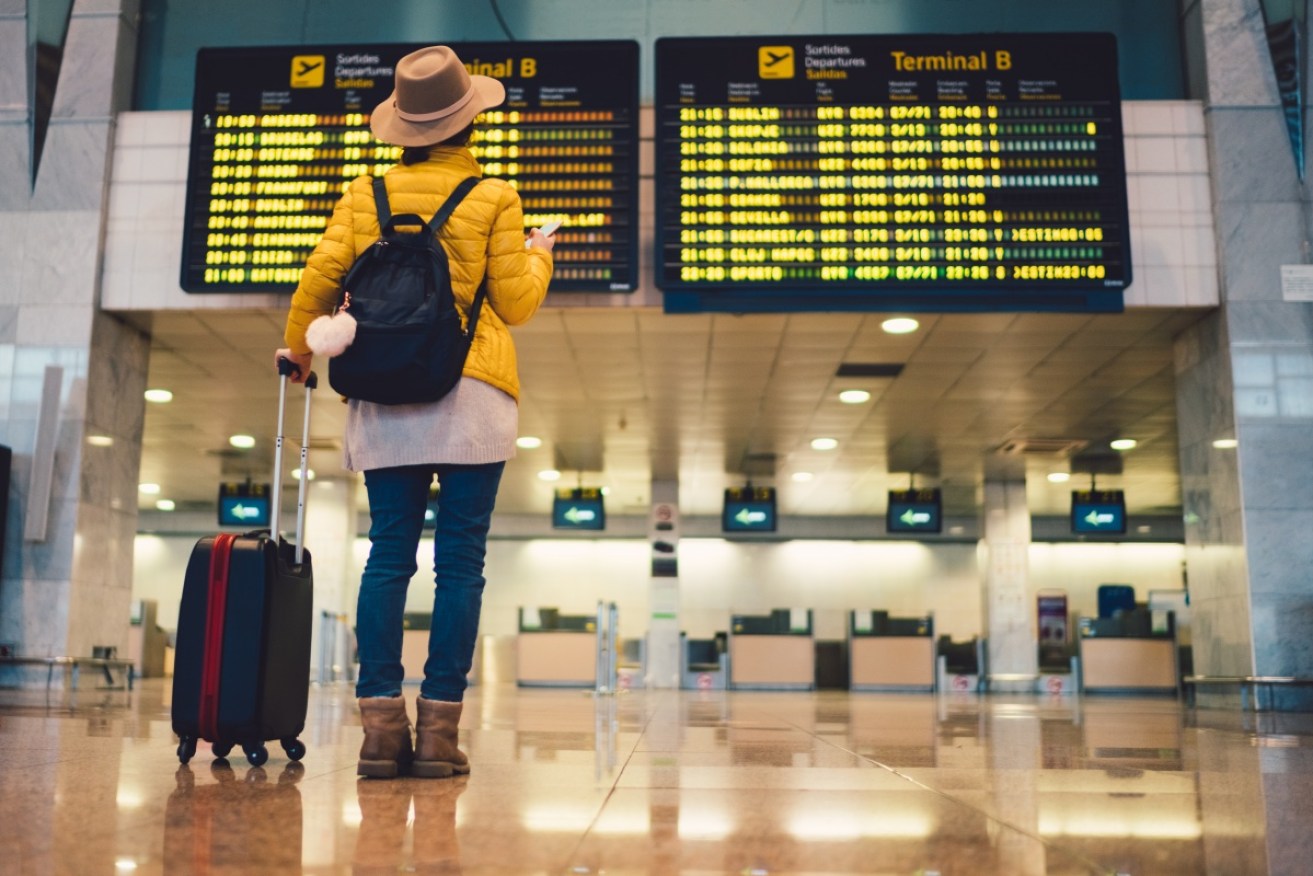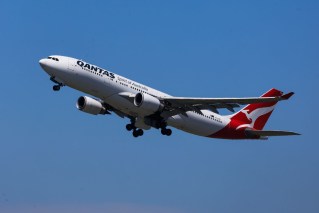Long haul on a budget: A travel writer’s tricks for making the most of cheap flights


There are tricks to making the most of that ticket with a low-cost airline. Photo: Getty
Think travel writers get the royal treatment? We might at hotels and resorts. But until we get there we have to suffer like most other travellers on economy or budget airlines. Here are a few tricks we use to reduce our suffering.
Upgrade to the quiet zone
AirAsia calls it the “quiet zone”. Jetstar calls it “up-front seating” – the first two or three rows at the front of economy section where, for a nominal fee, passengers are afforded extra leg-room, a seat with a deeper pitch and a separation buffer of at least a few metres between them and screaming babies.
But the real pay-off is the opportunity of scoring an entire row of seats to stretch out for the duration of the flight – because most budget-airline passengers are too cheap to pay extra and these seats tend to be empty.
On a recent 24-hour LATAM Airlines flight from Sydney to Santiago, $40 bought me a row of seats, the luxury of stretching out and a fair night’s sleep.
Take the window seat
The window seat is prime real estate in any economy-class row. With economy airlines like Virgin, all you have to do is book early enough, while budget airlines like TigerAir charge a few extra dollars.
It’s worth it because whoever sits in the window seat has control over the window shade plus a privacy nook with a few precious extra centimetres of head and shoulder space.
Need to use the bathroom? Other passengers in your row will have to make way for you but you won’t have to return the favour.
If all the window seats are booked, opt for an aisle – anything to avoid the dreaded middle seat where you’ll be sandwiched between strangers in no-man’s land in the war for comfort.
And avoid seats in the rear row as these might not recline, and might be close to noisy and sometimes odiferous lavatories.

Grab the window seat if you can – and the aisle if you can’t. Photo: Getty
Avoid the emergency-row trap
At check-in, counter staff might offer to move you to the emergency row, which has extra legroom, at no extra cost. Don’t agree – it can be a trap.
Emergency-row seats can be the worst on the entire plane. The armrests are non-retractable and made of solid steel, reducing seat width by about five centimetres. And having no seat in front of you means no arms-reach or under-seat storage space, so you’ll need to leave your bag and books in the overhead bins during take-off and landing.
The window seat in an emergency row is probably the worst on larger and wide-body jets; it can be colder as there is slightly less heat insulation in the door and surrounds. I learned this the hard way on a 10-hour Cebu Pacific flight to Manila while wearing a T-shirt and shorts.
Eat little or nothing
You’re better off not eating when crossing time zones, for two reasons.
First, the food on most economy flights is still crap – essentially microwaved TV dinners. Second, you’ll have a harder time falling asleep – eating tells your body to prepare for activity.
Instead, eat a good square meal rich with protein, fibre and fat two hours before departure, and another healthy meal two hours after you land. If fasting isn’t an option for you, pack high-protein snacks in your carry-on like dried fruit, raw nuts, beef jerky, protein bars or an avocado and chicken salad.

Forget the on-board food: eat before you get on the plane. Photo: Getty
Drink lots
No, this does not mean Jack Daniel’s and Coke. It means you should drink one litre of water for every three hours of flying.
Get physical
A run or workout in the gym or pool before a long-haul flight is ideal. If you don’t have time, walk around the airport before departure.
Also, maintain body movement during the flight. Go for a walk up and down the aisle once every hour. This is essential on flights lasting more than eight hours to avoid deep-vein thrombosis, a blood clot that forms in the veins of immobile passengers.
In extreme cases, the clot can travel to the chest and cause a heart attack or stroke. However, it most commonly manifests as swelling of the legs, feet or arms.
Invest in a high-tech travel pillow
Travel pillows are your single most important tool as they prevent your head from bobbing left to right when you fall asleep.
There are some really cool high-tech options available, such as GOSLEEP, a memory foam pillow and sleep mask in one, and Huzi Design’s Infinity, a mobius-shaped pillow that forms like a snake around your neck. They sell for $30 to $40 – about what you’ll pay at the airport for a standard travel pillow filled with styrofoam beads.
Avoid inflatable travel pillows – they’re scratchy and can leak.

The Infinity is a cut above standard travel pillows. Photo: Getty
BYO entertainment
Budget airlines charge passengers up to $30 for in-flight movie libraries on long-haul flights, and the selection of movies often isn’t that great.
Instead, take time to download a couple of new-release or cult movies onto your laptop while packing at home.
Ditto with books. Airport newsagents are notoriously pricey. Why pay $40 for the book of Game of Thrones when your local library will lend it you for free?
Appreciate the miracle of flight
People sometimes come back from holidays in the Greek Isles or skiing in the Canadian Rockies with horror stories about tiny seats, terrible service and awful food on long-haul flights. Don’t be one of them.
Not so long ago, such journeys took months, or even years. People could take ill and die along the way. Today, travelling overseas and across continents is a fair bit easier.
Don’t focus on the 20-minute delay before you board or the additional 40 minutes they made you sit on the tarmac so your plane didn’t collide with another. Focus on the miracle of flight instead.








